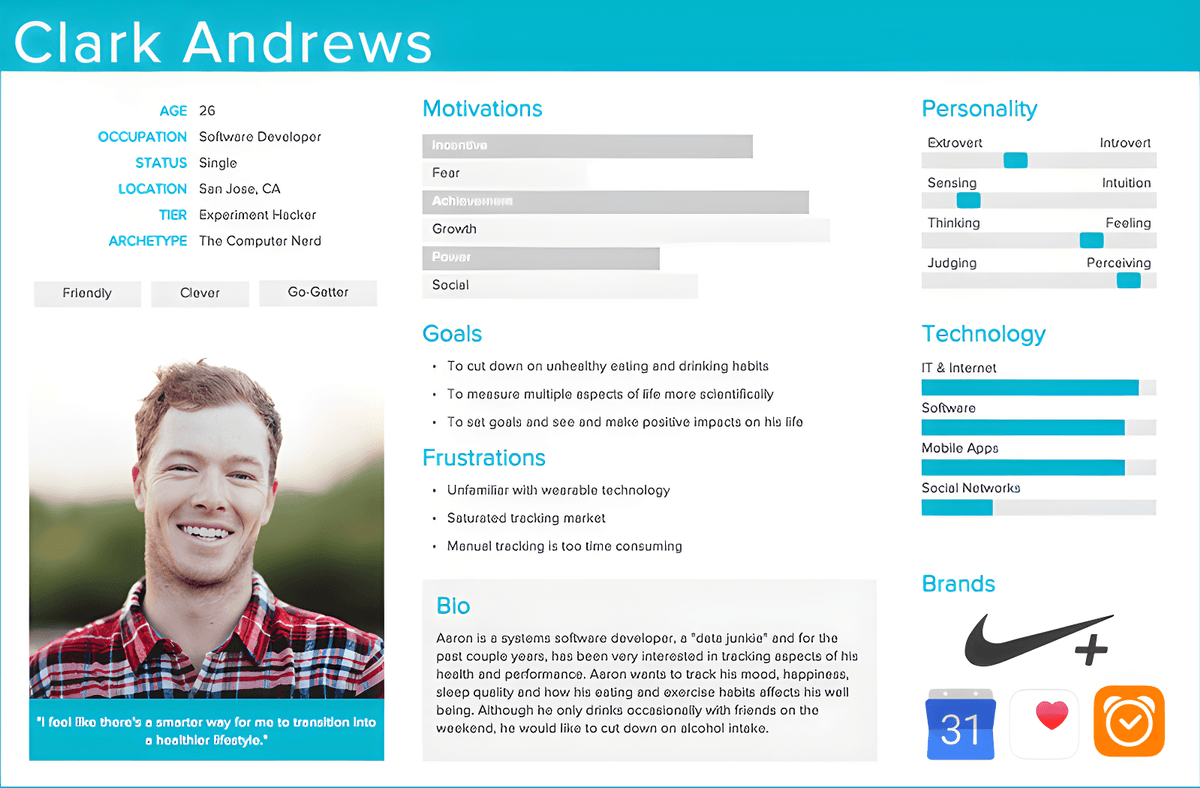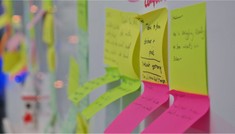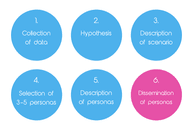Personas: Why is it important to understand your users?

Personas are amazing! If you don’t have them or if you have them but don’t use them (what a waste!) then you’re missing out on a whole host of business benefits. Let’s have a quick look at these before we dive more into what personas are and how they fit into the design process…
Benefits of Personas
- Company wide understanding of who your users are
- Deep understanding of customer behaviour and needs
- Stop everyone in your company from talking about themselves, their friends and family as the user(s)
- More effective, focussed conversations and business meetings
- Clearer and better decision making – focussed on user needs and goals
- Greater empathy with the customer
Enables your design team and project managers to create much better products and services
Where did it all begin?
Personas were introduced in 1998 by Alan Cooper.
At the time he was working on the design of new software and he interviewed some colleagues (possible future users of the software), to collect some ideas to implement in his project. That day, without even realising it, Cooper started to engage himself in a dialogue, play-acting as a project manager, inspired by one of the colleagues he interviewed that day.
Cooper found this play-acting technique was tremendously effective for solving design questions around functionality and interaction, allowing him to understand what was necessary or unnecessary from a user-centred point of view.
Since then, he used this technique to design all of his products, bearing in mind the benefits of thinking from the users point of view. Hypothetical user archetypes allowed him and his clients to better understand the end user in their projects.
What is the personas method?
Using Cooper’s own words:
“You tend to canvas the user community, collect their requests for functions, and then provide them a product containing all of those functions. I call this the sum of all desired features.”
Personas are narrations, stories about imagined characters; they are imagined and described in interaction with the product that is going to be developed (website, device, app, software etc.). Personas are defined in the early stages of the design process and they guide the project team throughout the product development process.
Defining personas is also essential for any consumer research involving the product. To canvas the profile of future users helps in the recruitment of a representative sample of the population for an effective and realistic UX testing session.
Why are personas so important to the design process?
The most important goal of personas is to create understanding and empathy with the end user(s).
If you want to design a successful product for people, first of all you need to understand them. Designing for everyone results in an unfocused goal that will dehumanise the profile of future users. The personas method allows you to draw not just a profile about gender and age, but to dig into the psychology of the imagined character in their interaction with the product.
“Personas consolidate archetypical descriptions of user behaviour patterns into representative profiles, to humanise design focus, test scenarios, and aid design communication” (Cooper, A. (2004) The inmates are running the Asylum: Why High-Tech Products Drive Us Crazy and How to Restore the Sanity)
The power of the narration that typified this method, allows us to create a story that introduces the product in the everyday life of the imagined character. The narration sets goals, creates visibility of problems and potential issues in the user-product relationship.
Personas are a crucial passage in the user-centred design process because they define expectations, concerns and motivations, helping design teams to understand how to design a product that will satisfy users needs and therefore be a success.
People are no longer passive users of a product or a service, but they are actively interacting with it; they are engaged in a ‘conversation’ in which both sides, user and product, are actively asking and responding. Defining personas during the design process helps your team to imagine that conversation.
Designing personas
The story
When designing personas, the story needs to cover the following:
- Demographic presentation of the character (age, gender etc.)
- General traits (occupation, interests, hobbies etc.)
- Psychological traits (needs, motivations, aspirations etc.)
The scenario
The scenario is very important for the effectiveness of personas.
Scenarios are imagined situations in which the character interacts with the product. Personas without scenarios have no value, so defining good scenarios is crucial.
The narration of an imagined scenario follows this structure:
- Setting a problem, a situation
- Describe the character’s reaction to the problem
- Define the role of the product in this scenario (e.g. how does the character interact with the product in that situation? Why does the character use the product? With which aims? What are the character expectations of the product?)
- Resolution of the situation
Personas design-process
Remember, if you want your product to be successful, you have to design it bearing in mind who will use it.
1. Collection of data. In the first step, you collect as much information and knowledge about your users as possible. Data can come from many different sources, even from pre-existing knowledge in the organisation. A good starting point is user research to gather insight into your users.
2. Hypothesis. Based on the data collected in the first step, you create a general draft of the various kind of users, including in which ways users differ from one another.
3. Description of scenarios. You create scenarios that describe solutions; possible situations that could trigger the use of the product are described. Scenarios will be used to better imagine user interaction with the product. The story about how the character will use the product is the personas’ ultimate objective.
4. Description of personas. Preparation of a brief description of the typical user, paying attention to user needs, motivations, aspirations and values. It is very important that you add to the narration one of the scenarios created in the previous step. The ultimate aim at this stage is to generate a narration that creates an empathic bond between the imagined person and the reader.
5. Selection of 3-6 personas. The ideal number of personas is limited (too many and you’ll start to lose track of who’s who). At this stage, choose 3-6 descriptions that are the most representative of your typical users. Selecting a limited number of personas allows you to be more focused during the design of the product.
6. Dissemination of personas. It is important that personas defined during the process are shared with the whole project team to provide a shared understanding of your users / customers.
Example persona
Here’s an example of a completed persona:
Need help or advice?
If you’d like to know more about personas and how they can help you to create a more successful product, contact our UX experts for free, friendly, no-ties advice.
Other posts you may find interesting:
The origin of personas (Cooper) – https://books.google.co.uk/books/about/The_Origin_of_Personas.html?id=NqlBtwAACAAJ&redir_esc=y
Persona templates – http://fakecrow.com/free-persona-template/
Share this post:


